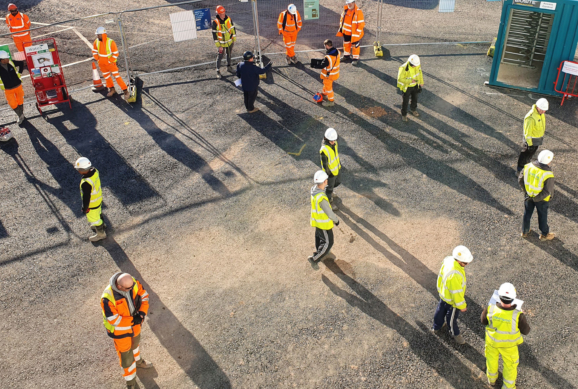Social distancing for scaffolders
28th January 2021
Social distancing became a way of life in 2020. Since March last year, we have been told that we must maintain a distance of 2 metres from everyone outside of our own household, including friends, family and colleagues.
Despite the fact that a mass vaccination programme is now underway, until the whole of the UK population has been vaccinated, we are still being urged to stick to these rules that have been put in place to protect us, including wearing masks, regularly washing our hands and social distancing.
There are certain industries and jobs that mean social distancing is a challenge and that includes the scaffolding industry. As a role predominantly reliant on team work, scaffolders must find that balance of maintaining distance without compromising on other areas of safety.
Industry guidance has covered this in great detail and with many revisions over the past year, we’ve taken a look at some of the key things to consider for social distancing when working at height:
Arrival and exit from work
Staggering starting and finishing times for scaffolders is one of the most effective ways to ensure that scaffolders are able to maintain their distance when entering or exiting the site. In addition to this, specifying separate entry and exit points will also reduce the number of people crossing paths, as well as providing multiple areas to enter and exit the site. It is a great idea to also have handwashing or sanitising stations within these areas.
Moving around the site and scaffolding
At Simian training centres and at client sites we have encouraged and utilised the use of one-way systems, with markings on the floor to outline the correct way round, as well as highlight two metre distances. This is of particular importance where there may be higher traffic, such as toilet facilities, and break areas.
What happens when two metres distance isn’t possible?
Of course, two metres distance is simply not feasible in some situations when working on scaffolding, therefore there must be additional measures put in place to reduce risk, these include:
- Reducing the number of scaffolders working in any one area
- Utilising screens if possible
- Wearing face masks
- Working side by side rather than face to face
From SIMIAN’s perspective, the past year has highlighted that the scaffolding industry is resilient and is able to adapt effectively when necessary. Being able to navigate the restrictions whilst maintaining site safety is a testament to scaffolders and their dedication to improving safety standards in all areas.
If you are looking for on-site scaffolding support, speak to the team at SIMIAN today.
